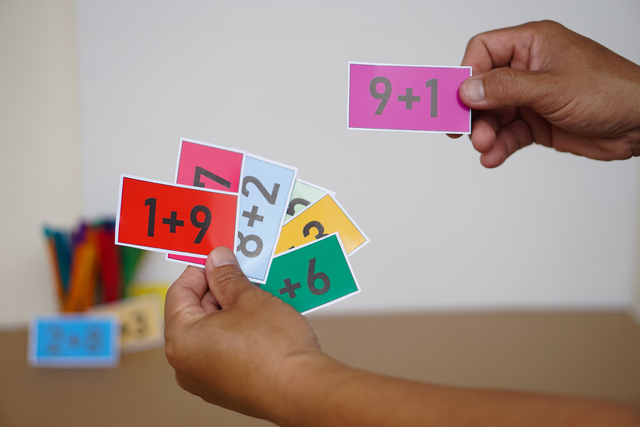Teaching Homeschool Math
Using Math Games & Storytelling in Your Homeschool

If you’ve ever looked up from a math book and seen nothing but blank stares, you’re not alone. But what if teaching math didn’t have to feel like a chore? What if it could be more about stories, mysteries, and play? Math storytelling can be woven into the narratives and games your children already love, turning math time into an adventure.
Storytelling has always been a powerful way of teaching, and math is no exception. Stories give numbers context—they show how math connects with real life. Check out these six ways to merge literacy and mathematics from Edutopia for suggestions on writing math-themed stories, keeping a problem-solving journal, or having your child “narrate” a math problem as if it were a plot. These simple practices build comprehension, creativity, and confidence—skills that stretch far beyond the math lesson.
Teaching Homeschool Math Through Games
Games add another playful dimension to teaching math at home. Board games, card games, puzzles, and even online adventures can turn abstract concepts into something concrete and fun. The National Inventors Hall of Fame shares story-driven math games where children step into roles—detectives, explorers, code-breakers—and solve problems along the way. Suddenly, multiplication is the tool to unlock the next clue, not just a set of numbers on a page.

Math – Bedrock of Curriculum
You don’t have to overhaul your curriculum to bring in stories and games. Think of it as a natural extension of what you already do: reading aloud, playing together, and exploring the world with curiosity. A character in one of my favorite books described her creative storytelling approach to mathematics in a way that’s stuck with me since middle school, helping to make math a “warm and human thing.” From chapter books to picture books, math storytelling can spark curiosity and inspire deeper connections.
For more ideas on building a strong foundation in homeschool math, check out The Science and Art of Teaching Math.
This fall, why not add a little math storytelling to your week? Read a favorite book and pause to notice the hidden numbers. Invent a silly math card game. Or write your own adventure tale on Math Storytelling Day. In the end, teaching math through games and literature isn’t about having “perfect lessons.” It’s about inviting wonder, conversation, and discovery. When math is part of story and play, children begin to see it as something alive—a tool, a puzzle, a window into the world—rather than simply something to endure.
*This article was originally posted on the Home Educators Association of Virginia (HEAV) blog. Used by permission. https://heav.org/teaching-homeschool-math-storytelling/

Megan Mora Fuentes
A homeschool graduate, Megan earned her associate degree while in high school. She has worked as an office manager for eight years. In her spare time, Megan enjoys kayaking, writing, and baking cookies for anyone who will eat them. She and her husband live in her hometown of Winchester.

















